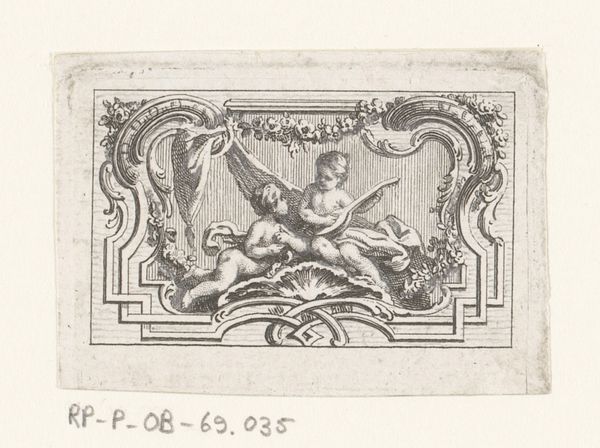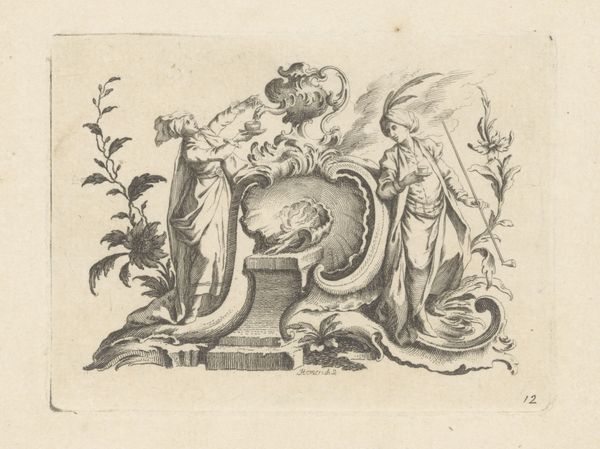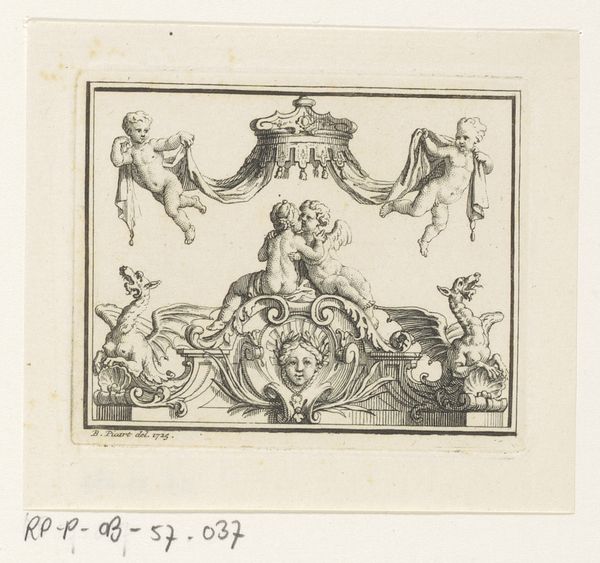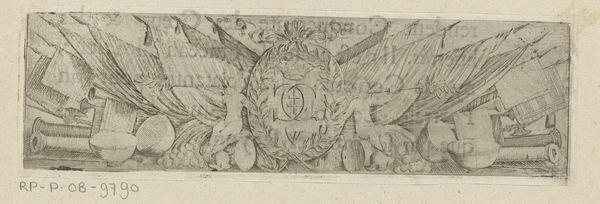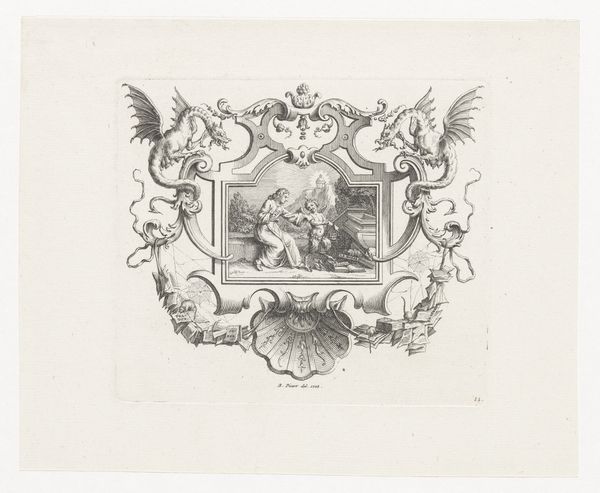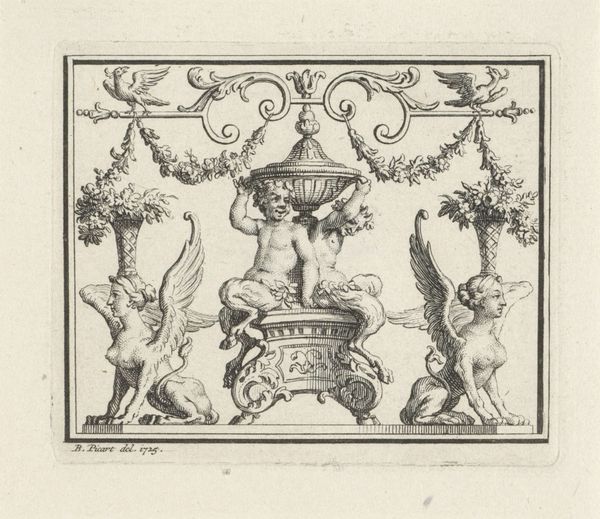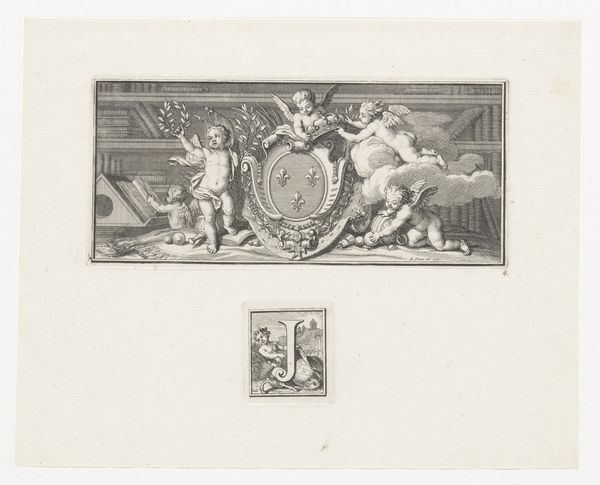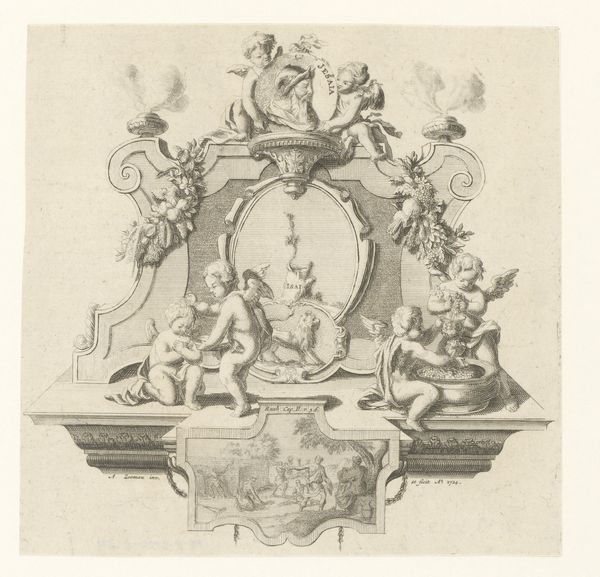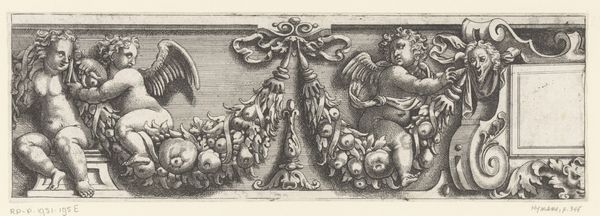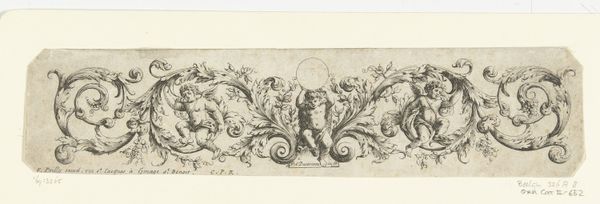
Dimensions: height 49 mm, width 72 mm
Copyright: Rijks Museum: Open Domain
This ornamental design was etched by Bernard Picart around 1725. The print’s stark lines and precise detail are characteristic of etching, a process that involves drawing with a needle through a wax coating on a metal plate, which is then submerged in acid. The acid bites into the exposed lines, creating grooves that hold ink. Etching was a commercial medium, allowing for the relatively quick production of multiple copies. Picart was a master of this technique, and created numerous illustrations for books and prints that were widely distributed. Here, the medium allows for the intricate depiction of winged monsters, musical instruments, and classical motifs. While the design may seem purely decorative, its existence is inherently tied to commerce. The design could be applied to any number of luxury objects. It reflects a growing culture of consumption in the 18th century, where even the most seemingly frivolous images were part of a larger economic system. By considering the materials and methods of production, we can see beyond the surface and understand the social and economic forces that shaped even the most delicate of artworks.
Comments
No comments
Be the first to comment and join the conversation on the ultimate creative platform.

